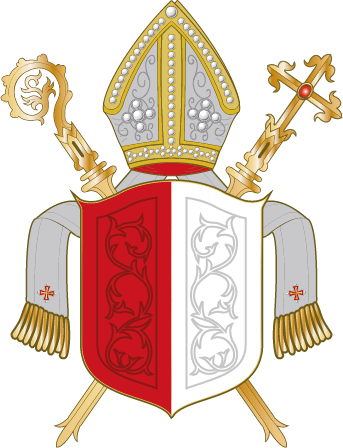Prince-Bishopric of Augsburg

The Prince-Bishopric of Augsburg is a small state located in the southern part of the Holy Roman Empire, known for its rich history and cultural heritage. The state is centered around the city of Augsburg, which serves as both its capital and spiritual center.
- Coat of Arms/Flag: The coat of arms of the Prince-Bishopric of Augsburg features a gold and red shield with a bishop’s crook, representing the spiritual authority of the state. The flag is a simple white and gold horizontal stripe.
- Country: Holy Roman Empire
- Capital City: Augsburg
- Other Settlements: Other notable towns in the Prince-Bishopric of Augsburg include Rain, Donauwörth, and Königsbrunn.
- Current Ruler: Prince-Bishop Franz von Waldburg-Zeil
- Local ruler: The Prince-Bishopric of Augsburg is an autonomous state within the Holy Roman Empire, ruled by a Prince-Bishop who holds both spiritual and temporal authority.
- Government: The Prince-Bishopric of Augsburg operates under a system of ecclesiastical governance, with the Prince-Bishop holding both spiritual and temporal authority.
- Legislature: The state council is the legislative body of the Prince-Bishopric of Augsburg, with members appointed by the Prince-Bishop.
- Demographics: The Prince-Bishopric of Augsburg has a population of around 100,000 people, mostly made of Germans.
- Languages: German is the primary language spoken in the Prince-Bishopric of Augsburg. Latin is also spoken as it is the official language of the Holy Roman Empire.
- Population: The Prince-Bishopric of Augsburg has a population of around 100,000 people.
- Religion(s): Christianity is the dominant religion of the Holy Roman Empire and the majority of the population in the Prince-Bishopric of Augsburg is Roman Catholic.
- Places of interest: The Augsburg Cathedral, The St. Afra Basilica, The Fuggerei, The Augsburg City Hall.
- Other Notable residents: The famous Holy Roman Emperor, Charles V, who was raised in Augsburg and spent much of his youth in the city.
The Prince-Bishopric of Augsburg is a state of great historical and cultural significance within the Holy Roman Empire. The state is centered around the city of Augsburg, which has been an important religious and cultural center for centuries. The Augsburg Cathedral, St. Afra Basilica, and Fuggerei are popular tourist attractions and are known for their architectural beauty and rich history. The Augsburg City Hall is also a popular tourist attraction, and it is known for its beautiful Renaissance architecture. The city is also home to various museums and art galleries, as well as a thriving theater and music scene.
The state is also famous for its production of textiles, particularly silk, and the city of Augsburg was one of the most important textile centers in the Holy Roman Empire. The state is also renowned for its delicious local cuisine, including dishes such as Leberknödel (liver dumplings) and Spätzle (a type of pasta).
The Prince-Bishopric of Augsburg is also home to various mythical creatures and folklore monsters, including the “Nachzehrer” (a type of zombie) which were said to reside in the city’s graveyards and feed on the dead. The “Knecht Ruprecht” is also a popular figure in the state’s folklore, a devil-like figure who would punish naughty children during the Christmas period.
In summary, The Prince-Bishopric of Augsburg is a state of great historical and cultural significance within the Holy Roman Empire, known for its rich history, cultural heritage, and delicious local cuisine. Visitors can explore the city’s impressive religious and architectural landmarks, discover the state’s rich textile history, and experience the state’s rich folklore and traditions.

 Buy me a coffee
Buy me a coffee